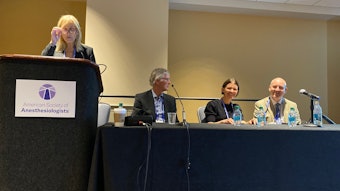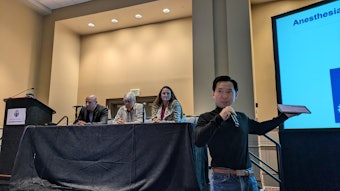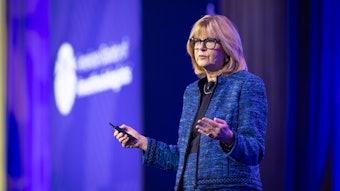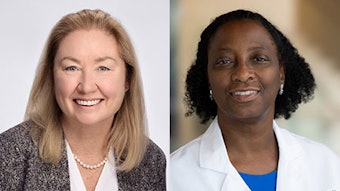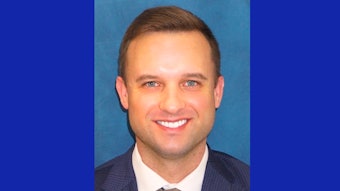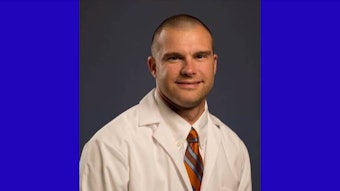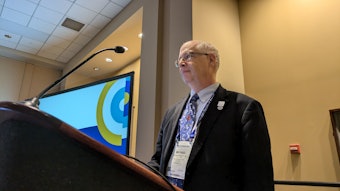Total joint replacement is on the move
Patient selection and analgesia management move to the forefront as demand increases.
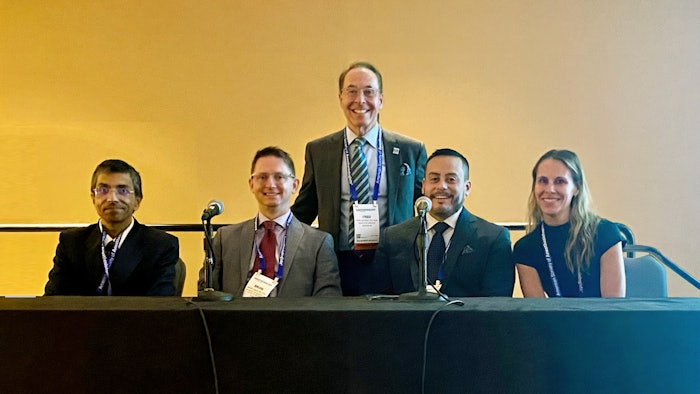
In the 2024 session “Navigating the Outpatient Joint Replacement Maze: Unraveling Controversies and Building Consensus for a Successful Program,” moderator Fred E. Shapiro, DO, FASA, laid the stage for the recent shift in total joint arthroplasty (TJA). Dr. Shapiro is an anesthesiologist at Massachusetts Eye and Ear and Associate Professor of Anesthesia at Harvard Medical School in Boston.
In the last 10 years, the number of patients needing joint replacement has increased, making it the most common procedure performed in the United States. Simultaneously, the demand to complete this type of surgery in an outpatient setting has amplified, in large part due to the actions of the Centers for Medicare & Medicaid Services. In 2018, CMS removed total knee arthroplasty (TKA) from the in-patient only (IPO) list, and in 2020, it removed total hip arthroplasty (THA).
By 2026, outpatient TJAs will surpass those performed inpatient, though that doesn’t necessarily mean discharge will occur the same day, said Ashley Shilling, MD. “Outpatient” can refer to an ambulatory surgery center, a unit within a main hospital, or a specialized outpatient care center, like the one at University of Virginia Health in Charlottesville, where Dr. Shilling is the Co-Director and Co-Chief of the Regional Anesthesiology Division.
Dr. Shilling said the process of outpatient joint replacement includes multiple stages, beginning with patient identification and selection. There is much to account for during the preoperative screening, she said, but essentially the considerations fall into two major buckets: safety concerns and efficiency concerns.
Safety includes factors such as postoperative monitoring, follow-up lab work, and access to specialists and physical therapy. Efficiency refers to surgical outcomes, which can be impacted by a patient’s contraindications and risk factors. Dr. Shilling said one way doctors can evaluate selection is using the Risk Assessment and Prediction Tool (RAPT), which looks at age, gender, environment, etc. Other methods include the Outpatient Arthroplasty Risk Assessment (OARA) Score and ASA Physical Status Classification for joint replacement surgery.
“Patient selection depends on social and medical comorbidities, and it requires buy-in from the patient’s family. This step is critical to deciding if surgery can be performed outpatient, and must be considered,” said Dr. Shilling.
Transparent communication and patient education are also imperative when selecting and preparing for TJA, said Jagan Devarajan, MBBS, FASA, Clinical Associate Professor of Anesthesiology at Cleveland Clinic in Ohio. Dr. Devarajan also touched on the importance of following an outpatient-specific Enhanced Recovery After Surgery (ERAS) pathway to achieve the best results. Consistent use of ERAS, he said, can improve patient well-being and satisfaction, engage providers, and reduce health care costs.
Although analysis of patient safety and outcomes of outpatient TKA and THA is limited and inconsistent, literature validates the shift in demand as patients don’t want to stay in the hospital, said Brian M. Osman, MD. Moving to outpatient for this type of surgery frees up hospital beds and spreads the burden across clinicians, said Dr. Osman, who is an anesthesiologist at Jackson Health System and Associate Professor of Clinical Anesthesiology at the University of Miami Miller School of Medicine in Florida.
Dr. Osman addressed intraoperative anesthesia management, including specific modalities, the role of certain applications, and new therapeutic options. Opioids, he cautioned, are generally discouraged, but do hold merit as a bridging technique.
“No gold standard has been established for orthopedic surgery, but recent evidence supports the successful use of a multimodal opioid cocktail of ropivacaine, epinephrine, clonidine, and ketorolac (RECK),” said Dr. Osman. “… At the core, the goal is to make sure the patient is comfortable and safe.”
Anesthesiologists must understand the full range of complications, such as local anesthetic systemic toxicity (LAST), postdural puncture headache (PDPH), postoperative urinary retention (POUR), which is underevaluated, and postoperative nausea and vomiting (PONV), which remains the primary reason for delayed discharge. Controversy remains, Dr. Osman said, on whether neuraxial anesthesia or general anesthesia should be used for both TKA and THA.
Alberto E. Ardon, MD, FASA, an Anesthesiology Consultant and Assistant Professor at Mayo Clinic in Jacksonville, Florida, also discussed the advantages and disadvantages of different anesthesia modalities in the global approach to pain control.
